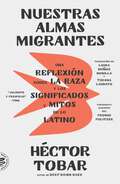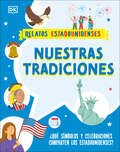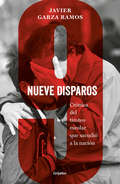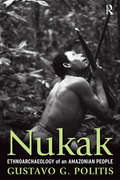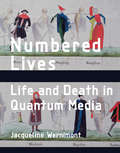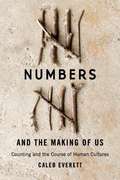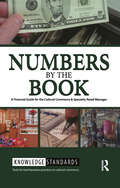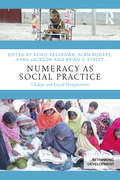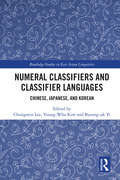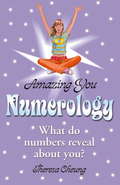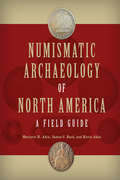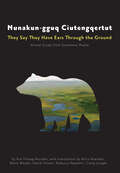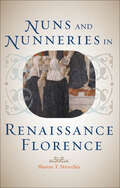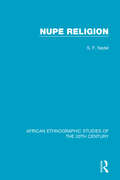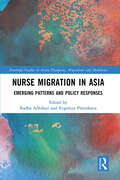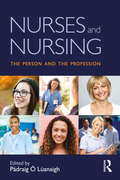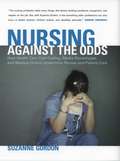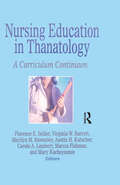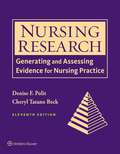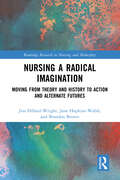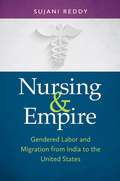- Table View
- List View
Nuestra tragedia persistente: La democracia autoritaria en México
by Lorenzo MeyerEsta obra se propone explorar algunas de las razones por las cuales, en el tránsito de un siglo a otro, no ha cristalizado el gran potencial de cambio en las estructuras de poder en México. Y es que lo que sustituyó al arraigado autoritarismo priísta no fue precisamente una democracia... Nuestra tragedia persistente es una obra indispensable del reconocido especialista Lorenzo Meyer para comprender el rompecabezas de la política mexicana. Lo que sustituyó al arraigado autoritarismo priista no fue precisamente una democracia, sino un sistema mixto de dos conceptos contradictorios: autoritarismo y democracia. Desde el inicio de nuestra historia como nación independiente, la agenda de la transformación democrática ha estado cargada de problemas tan complejos como urgentes de resolver. Los obstáculos para llevar a cabo los cambios necesarios han resultado formidables. Entre ellos destacan los interesescreados y una cultura política en la que dominan fuertes rasgos conservadores: ambos han jugado una y otra vez a favor de la contención del cambio. Esta obra se propone explorar algunas de las razones por las cuales, en el tránsito de un siglo a otro, no ha cristalizado el gran potencial de cambio en las estructuras de poder en México. Y es que lo que sustituyó al arraigado autoritarismo priista no fue precisamente una democracia sin adjetivos, sino un sistema mixto, algo que contiene elementos propios de dos conceptos contradictorios: autoritarismo y democracia. En suma, a partir de una serie de reflexiones de gran alcance, en este libro Lorenzo Meyer invita al lector interesado a adentrarse en los grandes dilemas políticos de nuestro tiempo, así como a tomar decisiones cruciales como ciudadano. "No podía ser más oportuna la publicación de Nuestra tragedia persistente: la democracia autoritaria en México. La radiografía de la clase política y de la fallida transición, de la falsa democracia en que vivimos, es certera, despiadada, contundente y bien fundamentada. El profesor Meyer se reconfirma como uno de los más lúcidos analistas de la realidad nacional". Pedro Salmerón, La Jornada
Nuestras Almas Migrantes (Our Migrant Souls - Spanish Edition): Una reflexión sobre la raza y los significados y mitos de lo latino
by Héctor TobarGanador del Kirkus Prize para Literatura No Ficción Nominado al Andrew Carnegie Medal for Excellence en Literatura No Ficción Entre los mejores libros del año: The New York Times • Time • Kirkus Reviews • NPR • BookPageCon su publicación original en tapa dura, Our Migrant Souls abrió nuevos caminos con su poderoso examen de las fuerzas sociales y políticas que moldean la identidad latina. Ahora en su primera traducción completa, Nuestras almas migrantes lleva el análisis definitivo y sin precedentes de Héctor Tobar sobre el significado de lo “latino” a los lectores de habla hispana, con la promesa de tender puentes entre generaciones y traspasar fronteras, ya que el libro sigue encabezando una conversación nacional muy necesaria sobre el pasado, el presente y el futuro de lo que significa ser estadounidense.Inspirado en los escritos de James Baldwin que abordan el papel de la raza en Estados Unidos, en las conversaciones de Tobar con sus estudiantes latinos y, por supuesto, en sus propias experiencias de vida y en las de su familia, Nuestras almas migrantes ofrece un valioso análisis de lo que significa ser latino en los Estados Unidos de hoy. En 2023, entre otros galardones, el libro ganó el Premio Kirkus de No Ficción, y fue seleccionado como Libro Notable del New York Times, uno de los Libros de Lectura Obligatoria de la revista Time y uno de los libros favoritos del año de NPR que “nos abre los ojos” y es “verdaderamente genial”.Al instante se convirtió en una lectura esencial, un libro icónico que ya pasa de lector a lector, provocando animadas y emotivas conversaciones en salas de conferencias, aulas de clase, salas de juntas y comedores. Por supuesto, se trata de una conversación que tiene lugar en más de un idioma a la vez, y es un libro que exige ser leído y comentado en inglés y en español. Ahora, gracias al trabajo de Tobar y de las aclamadas traductoras Laura Muñoz Bonilla y Tiziana Laudato, eso es posible.ENGLISH DESCRIPTION:WINNER OF THE KIRKUS PRIZE FOR NONFICTIONLong-listed for the Andrew Carnegie Medal for Excellence in NonfictionNamed One of The New York Times’ 100 Notable Books of 2023One of Time’s 100 Must-Read Books of 2023 | A Top Ten Book of 2023 at Chicago Public LibraryA new book by the Pulitzer Prize–winning writer about the twenty-first-century Latino experience and identity.With its original hardcover publication, Our Migrant Souls broke new ground in its powerful examination of the social and political forces that shape Latino identity. Now, in its first full translation, Nuestras Almas Migrantes brings Héctor Tobar’s definitive and unprecedented analysis of the meaning of “Latino” to Spanish-language readers, promising to bridge generations and cross borders as the book continues to spearhead a much-needed national conversation about the past, present, and future of what it means to be an American.Inspired by James Baldwin’s writing wrestling with the role of race in the United States, along with Tobar’s own conversations with his Latino students and, of course, by his and his family’s own life experiences, Our Migrant Souls provides an invaluable reckoning with what it means to be Latino in the United States today. In 2023, among other honors, the book won the Kirkus Prize for Nonfiction, and was selected as a New York Times Notable Book, one of Time magazine’s Must-Read Books, and one of NPR’s favorite “eye-opening” and “seriously great” books of the year.It instantly became essential reading, an iconic book already being passed from reader to reader, provoking lively, emotional discussion in lecture halls, classrooms, boardrooms, and dining rooms. This is a conversation, of course, that takes place in more than one language at a time, and is a book that demands to be read and talked about in English and in Spanish. Now, thanks to the work of Tobar and the acclaimed translators Laura Muñoz Bonilla and Tiziana Laudato—to be published alongside the much-anticipated paperback of the original edition and in time for National Hispanic Heritage Month—eso es posible.
Nuestras tradiciones: ¿Qué símbolos y celebraciones comparten los estadounidenses? (Relatos estadounidenses)
by DKInspira jóvenes curiosos a explorar los símbolos y las tradiciones estadounidenses a lo largo de la historia y cómo es la vida en EE. UU. hoy en díaParte de una serie inspirante que apoya el aprendizaje acerca del gobierno y el civismo en un EE. UU. contemporáneo a través de eventos históricos y las personas que formaron los mismos. Nuestras tradiciones interconecta contexto,personalidades y eventos históricos y las experiencias de estadounidenses modernos. Ayudará los estudiantes a entender temas claves de estudios sociales, como los orígenes de instituciones y valores de EE. UU. y la relevancia que tienen a las vidas de jóvenes hoy. El libro explora los orígenes y la importancia de los símbolos de EE. UU., como la bandera y el Juramento, la Casa Blanca y el Capitolio. Explica días feriados nacionales y tradiciones claves, como el Día de los Veteranos, el Día del Trabajo y el Día de Acción de Gracias. ¿Cómo surgieron estos símbolos y tradiciones y cómo impactan en la vida contemporánea?
Nueve disparos: Crónica del tiroteo escolar que sacudió a la nación
by Javier Garza RamosCrónica periodística que reconstruye minuto a minuto la terrible masacre que perpetró un niño de 11 años en su escuela y revela una trama que incluye disfunción familiar, narcoviolencia y hasta nexos con la delincuencia organizada. «Los sucesos del Colegio Cervantes nos sacudieron a todos: vimos de frente una dimensión del horror que creíamos de otras latitudes. Entonces llegó el periodista a ayudarnos a entender. En este libro, Javier Garza Ramos teje no sólo la memoria de lo sucedido, sino el contexto que lo hizo posible. Relato minucioso y cuidado, dedicado y apasionado, de la pluma de Javier entendemos que el Colegio Cervantes es, sobre todo, México. ¡Lectura imprescindible!» Gabriela Warkentin «Javier Garza Ramos da en Nueve disparos una clase magistral de periodismo. No sólo por su dominio de la técnica y los géneros tradicionales del oficio, sino también por su reflexión acerca de lasredes sociales y el uso ético que puede hacerse de la información que éstas aportan o deforman; su desmontaje factual de tesis mitificadas en torno a temas tan delicados como el bullying; su oportuno ejercicio de crónica comparada entre el tiroteo en el Colegio Cervantes de Torreón y el evento Columbine, que funcionó como uno de los catalizadores del incidente lagunero. Hay una paradoja estética en la prosa de Garza: a fuerza de mantenerse ecuánime, transmite una belleza trágica. Tal vez su intención original no era ésa, sino contar los sucesos de manera veraz y prolija. Pero es justo esta ausencia de pretensiones lo que hace de Nueve disparos un relato tan entrañable, un poco a la manera de Walsh: la necesidad del autor de dar un paso atrás para enfocar mejor los hechos y perseguir escrupulosamente el trasfondo de una historia que le importa de verdad.» Julián Herbert
Nukak: Ethnoarchaeology of an Amazonian People (UCL Institute of Archaeology Publications)
by Gustavo PolitisFrom Gustavo Politis, one of the most renowned South American archaeologists, comes the first in-depth study in English of the last “undiscovered” people of the Amazon. His work is groundbreaking and urgent, both because of encroaching guerrilla violence that makes Nukak existence perilously fragile, and because his work with the Nukak represented one of the last opportunities to conduct research with hunter-gatherers using contemporary methodological and the theoretical tools. Through a rich and comprehensive ethno-archaeological portrait of material culture “in the making,” this work makes methodological and conceptual advances in the interpretation of hunter-gather societies. Politis’s conclusions, based on six years of original research and on comparative analysis, are integrative and contribute to the identification of the multiple factors involved in the formation of hunter-gatherer archaeological assemblages.
Numbered Lives: Life and Death in Quantum Media (Media Origins)
by Jacqueline WernimontA feminist media history of quantification, uncovering the stories behind the tools and technologies we use to count, measure, and weigh our lives and realities. Anglo-American culture has used media to measure and quantify lives for centuries. Historical journal entries map the details of everyday life, while death registers put numbers to life's endings. Today we count our daily steps with fitness trackers and quantify births and deaths with digitized data. How are these present-day methods for measuring ourselves similar to those used in the past? In this book, Jacqueline Wernimont presents a new media history of western quantification, uncovering the stories behind the tools and technologies we use to count, measure, and weigh our lives and realities. Numbered Lives is the first book of its kind, a feminist media history that maps connections not only between past and present-day “quantum media” but between media tracking and long-standing systemic inequalities. Wernimont explores the history of the pedometer, mortality statistics, and the census in England and the United States to illuminate the entanglement of Anglo-American quantification with religious, imperial, and patriarchal paradigms. In Anglo-American culture, Wernimont argues, counting life and counting death are sides of the same coin—one that has always been used to render statistics of life and death more valuable to corporate and state organizations. Numbered Lives enumerates our shared media history, helping us understand our digital culture and inheritance.
Numbers and Narratives in Bangladesh's Economic Development
by Rashed Al TitumirThis book focuses on socio-economic developments of Bangladesh by challenging the dominant international narrative of the case being termed as “development surprise”, “development paradox” or “development conundrum,” given the absence of good governance. In doing so, the book examines the political economic dynamics and offers valuable insights into the current state of the Bangladeshi economy in light of stability, transformability and sustainability.Pointing to the ‘high’ rate of growth in gross domestic product (GDP) in Bangladesh, there is wide belief that economic growth can be obtained even without functioning institutions, and is more important than an inclusive political system. Advocates go on to argue that authoritarianism may be condoned as long as a steady course of development is perused. However, the inadequacy of comparative analysis in to the state of the economy of Bangladesh vis-à-vis other relevant economies makes such claims myopic and parochial.This book thus investigates the numbers and narratives to ascertain the validity of such assertions and lamentations by looking at the necessary and sufficient conditions of development. The necessary conditions imply an incisive inquiry into the factors of economic growth— land, labour, capital and technology while sufficient conditions warrant a penetrating incisive inquiry into the factors of economic growth— land, labour, capital and technology. As such, the book explores development by drawing variables of politics and economics to find out a causal relationship, and interjects these variables have on themes such as growth, agriculture, manufacturing industry, financial sector, health, education, poverty and inequality.
Numbers and the Making of Us: Counting and the Course of Human Cultures
by Caleb EverettNumber concepts are a human invention developed and refined over millennia. They allow us to grasp quantities precisely: recent research shows that most specific quantities are not perceived in the absence of a number system. Numbers are not innate or universal; yet without them, the world as we know it would not exist.
Numbers by the Book: A Financial Guide for the Cultural Commerce & Specialty Retail Manager
by Museum Store Association Inc.Numbers by the Book is a step by step guide to the financial side of planning, opening and operating a successful museum retail operation. This 96 page gem is lavishly illustrated with tables and charts to guide you through the process of creating budgets, choosing a POS system, purchasing, and measuring success. Includes 14 worksheets and forms to launch your museum store towards profit!
Numeracy as Social Practice: Global and Local Perspectives (Rethinking Development)
by Keiko Yasukawa, Alan Rogers, Kara Jackson and Brian V. StreetLearning takes place both inside and outside of the classroom, embedded in local practices, traditions and interactions. But whereas the importance of social practice is increasingly recognised in literacy education, Numeracy as Social Practice: Global and Local Perspectives is the first book to fully explore these principles in the context of numeracy. The book brings together a wide range of accounts and studies from around the world to build a picture of the challenges and benefits of seeing numeracy as social practice ̶ that is, as mathematical activities embedded in the social, cultural, historical and political contexts in which these activities take place. Drawing on workplace, community and classroom contexts, Numeracy as Social Practice shows how everyday numeracy practices can be used in formal and non-formal maths teaching and how, in turn, classroom teaching can help to validate and strengthen local numeracy practices. At a time when an increasingly transnational approach is taken to education policy making, this book will appeal to development practitioners and researchers, and adult education, mathematics and numeracy teachers, researchers and policy makers around the world.
Numeral Classifiers and Classifier Languages: Chinese, Japanese, and Korean (Routledge Studies in East Asian Linguistics)
by Chungmin Lee; Young-Wha Kim; Byeong-uk YiFocusing mainly on classifiers, Numeral Classifiers and Classifier Languages offers a deep investigation of three major classifier languages: Chinese, Japanese, and Korean. This book provides detailed discussions well supported by empirical evidence and corpus analyses. Theoretical hypotheses regarding differences and commonalities between numeral classifier languages and other mainly article languages are tested to seek universals or typological characteristics. The essays collected here from leading scholars in different fields promise to be greatly significant in the field of linguistics for several reasons. First, it targets three representative classifier languages in Asia. It also provides critical clues and suggests solutions to syntactic, semantic, psychological, and philosophical issues about classifier constructions. Finally, it addresses ensuing debates that may arise in the field of linguistics in general and neighboring inter-disciplinary areas. This book should be of great interest to advanced students and scholars of East Asian languages.
Numerology (Amazing You #22)
by Theresa CheungDo you have a lucky number? What's your favourite number? Do numbers sometimes pop into your head for no reason?Numbers have hidden meanings and this book shows you how to crack their secret code to make the most of yourself and your life. Find out your birthday number, personality number, soul number, life plan number and your destiny number and see what they say about YOU. Numerology shows you how you can change your everyday life by discovering just how amazing you are. It is part of our stunning new Mind Body Spirit series for teenage girls - Amazing You.
Numismatic Archaeology of North America: A Field Guide (Guides to Historical Artifacts #4)
by Marjorie H. Akin James C. Bard Kevin AkinNumismatic Archaeology of North America is the first book to provide an archaeological overview of the coins and tokens found in a wide range of North American archaeological sites. It begins with a comprehensive and well-illustrated review of the various coins and tokens that circulated in North America with descriptions of the uses for, and human behavior associated with, each type. The book contains practical sections on standardized nomenclature, photographing, cleaning, and curating coins, and discusses the impacts of looting and of working with collectors. This is an important tool for archaeologists working with coins. For numismatists and collectors, it explains the importance of archaeological context for complete analysis.
Nunakun-gguq Ciutengqertut/They Say They Have Ears Through the Ground: Animal Essays from Southwest Alaska
by Ann Fienup-RiordanLifeways in Southwest Alaska today remains inextricably bound to the seasonal cycles of sea and land. Community members continue to hunt, fish, and make products from the life found in the rivers and sea. Based on a wealth of oral histories collected over decades of research, this book explores the ancestral relationship between Yup’ik people and the natural world of Southwest Alaska. Nunakun-gguq Ciutengqertut studies the overlapping lives of the Yup’ik with native plants, animals, and birds, and traces how these relationships transform as more Yup’ik people relocate to urban areas and with the changing environment. The book will be hailed as a milestone work in the anthropological study of contemporary Alaska.
Nuns and Nunneries in Renaissance Florence
by Sharon T. StrocchiaWinner, Helen and Howard R. Marraro Prize, American Catholic Historical AssociationThe 15th century was a time of dramatic and decisive change for nuns and nunneries in Florence. In the course of that century, the city’s convents evolved from small, semiautonomous communities to large civic institutions. By 1552, roughly one in eight Florentine women lived in a religious community. Historian Sharon T. Strocchia analyzes this stunning growth of female monasticism, revealing the important roles these women and institutions played in the social, economic, and political history of Renaissance Florence. It became common practice during this time for unmarried women in elite society to enter convents. This unprecedented concentration of highly educated and well-connected women transformed convents into sites of great patronage and social and political influence. As their economic influence also grew, convents found new ways of supporting themselves; they established schools, produced manuscripts, and manufactured textiles. Strocchia has mined previously untapped archival materials to uncover how convents shaped one of the principal cities of Renaissance Europe. She demonstrates the importance of nuns and nunneries to the booming Florentine textile industry and shows the contributions that ordinary nuns made to Florentine life in their roles as scribes, stewards, artisans, teachers, and community leaders. In doing so, Strocchia argues that the ideals and institutions that defined Florence were influenced in great part by the city’s powerful female monastics. Nuns and Nunneries in Renaissance Florence shows for the first time how religious women effected broad historical change and helped write the grand narrative of medieval and Renaissance Europe. The book is a valuable text for students and scholars in early modern European history, religion, women’s studies, and economic history.
Nunsuch
by Candida LundToday the term "sister" implies community. These wonderful stories show all aspects of community life--from sublime to ridiculous.
Nupe Religion
by S. F. NadelOriginally published in 1954, this book is a pentrating study of Nupe religion and the increasing influence that Islam has had on indigenous forms of worship. The practise of witchcraft, forms of ritual, Gods and faith in medicine are all examined as an integral part of Nupe religion and culture.
Nuri Does Not Exist
by Sadru JethaAmid a sea of dystopian world literatures haunted by the fractious claims of identity politics, Nuri Does Not Exist is an astonishingly charming collection of linked short stories that engages us with the utterly believable innocence of its Utopian vision. Accompany Nuri from Zanzibar to Canada as he learns how servitude transcends slavery; fealty transcends servitude; and community transcends fealty.
Nurse Migration in Asia: Emerging Patterns and Policy Responses (Routledge Studies in Asian Diasporas, Migrations and Mobilities)
by Radha Adhikari Evgeniya PlotnikovaNurse Migration in Asia explores the ever-increasing need for a larger nursing and healthcare workforce in Asia, where countries are undergoing rapid transformation, given economic globalisation and commercial expansion. The book examines some of the major forces that play key roles in the changing dynamics of 21st century nurse and care worker migration in the Asian context; changes which inevitably have global implications. The country case studies range from India, China, Singapore to Japan and the Philippines. Common themes emerge: the rapid and unpredictable nature of nurse migration patterns, including the direction, purpose and frequency of migration; and the changes in professional training, regulation, and workforce policy. Forces causing these shifts include the changing population demography, global and regional economic fluctuations, and finally changing professional roles and gender dynamics. The book analyses the response to these transformations, and how countries adjust their immigration regulations, to attract foreign healthcare professionals. It concludes by highlighting the importance for all countries to remain vigilant as regards the exacerbating workforce crisis, and engage in developing coherent policy governance frameworks to manage healthcare workforce at the national or international levels. A valuable addition to the literature, this book will be of interest to academics in the field of nursing, health and social care workforce studies, population demography, labour markets, gender and international migration studies, globalisation in health and Asian studies.
Nurses and Nursing: The Person and the Profession
by Pádraig Ó LúanaighThis textbook draws on international contributors with a range of backgrounds to explore, engage with and challenge readers in understanding the many aspects and elements that inform and influence contemporary nursing practice. With a focus to the future, this book explores the challenges facing health services and presents the arguments for a nursing contribution and influence in ensuring safe and quality care. Readers are supported to explore how, as individuals, they can shape their personal nursing identity and practice. The structure of the text is based on the belief that an individual nurse’s professional identity is developed through an interaction between their personal attributes and the influences of the profession itself. Reflecting this approach, the authors engage in a conversation with the reader rather than simply presenting a series of facts and information. Organised around a series of topical and pertinent questions and drawing on perspectives from policy, education and practice, the book explores a diverse range of topics such as: how historical and popular media representations of nursing hold back nursing practice today; the opportunities presented through education and nursing role development to increase the nursing contribution to health services; the economic and political influences on nursing and health care; how the professional regulation of nurses and core values informs your practice; ways to define and develop your own strong nursing identity. Central chapter questions provide ideal triggers for group discussions in class or online and equally as discussion topics between colleagues to support ongoing professional development. There is an emphasis throughout Nurses and Nursing on challenging thinking to recast nursing practice for the future by encouraging the reader to explore and create their emerging nursing identity or re-examine previously long held views. This text supports the reader to better understand health care, nursing and most importantly themselves as nurses.
Nursing Against The Odds
by Suzanne GordonIn the United States and throughout the industrialized world, just as the population of older and sicker patients is about to explode, we have a major shortage of nurses. Why are so many RNs dropping out of health care's largest profession? How will the lack of skilled, experienced caregivers affect patients? These are some of the questions addressed by Suzanne Gordon's definitive account of the world's nursing crisis. In Nursing against the Odds, one of North America's leading health care journalists draws on in-depth interviews, research studies, and extensive firsthand reporting to help readers better understand the myriad causes of and possible solutions to the current crisis. Gordon examines how health care cost cutting and hospital restructuring undermine the working conditions necessary for quality care. She shows how the historically troubled workplace relationships between RNs and physicians become even more dysfunctional in modern hospitals. In Gordon's view, the public image of nurses continues to suffer from negative media stereotyping in medical shows on television and from shoddy press coverage of the important role RNs play in the delivery of health care. Gordon also identifies the class and status divisions within the profession that hinder a much-needed defense of bedside nursing. She explains why some policy panaceas-hiring more temporary workers, importing RNs from less-developed countries-fail to address the forces that drive nurses out of their workplaces. To promote better care, Gordon calls for a broad agenda that includes safer staffing, improved scheduling, and other policy changes that would give nurses a greater voice at work. She explores how doctors and nurses can collaborate more effectively and what medical and nursing education must do to foster such cooperation. Finally, Gordon outlines ways in which RNs can successfully take their case to the public while campaigning for health care system reform that actually funds necessary nursing care.
Nursing Education in Thanatology: A Curriculum Continuum
by Austin H. Kutscher Florence E. Selder Virginia W. Barrett Marilyn M. Rawnsley Carole A. Lambert Marcia Fishman Mary KachoyeanosNursing Education in Thanatology is an excellent source book for planning thanatology courses or for integrating concepts of thanatology into a nursing curriculum. As the formal teaching of thanatology in schools for health care professionals is generally overlooked and ill-defined, many students and professionals will learn to deal with dying and grieving upon their first encounter with death. This practical book will aid educators in planned inclusion of thanatology in curriculum to insure the preparedness of health care professionals in assisting patients and/or their families during an emotionally difficult period. There are many suggestions presented for beneficial methods of integrating thanatology education into existing courses or offering thanatology as a single course for education professionals.A vital resource for inservice coordinators working with clinicians in oncology, hospital staff, and health professionals in community or outpatient health centers, Nursing Education in Thanatology is excellent reading for helping professionals working with elderly people.
Nursing Research: Generating and Assessing Evidence for Nursing Practice
by Denise F. Polit Cheryl Tatano BeckWhether used to help students learn how to perform research or how to critically appraise research reports for use in practice, this authoritative, approachable textbook shows how nursing research is applicable across today's changing healthcare field. The authors detail the latest methodologic innovations that have arisen in nursing, medicine, and the social sciences in their signature user-friendly style, accompanied by the helpful learning features, pedagogy, and clean design that have made this book a classic. The updated 11th Edition adds two new chapters designed to help students ensure the accuracy and effectiveness of research methods and the relevance and applicability of nursing inquiries. Extensively revised content throughout strengthens students' ability to locate and rank clinical evidence, verify the authoritativeness of systematic reviews, and distinguish interpretive approaches from aggregative approaches using meta-aggregation.
Nursing a Radical Imagination: Moving from Theory and History to Action and Alternate Futures (Routledge Research in Nursing and Midwifery)
by Brandon Brown Jess Dillard-Wright Jane Hopkins-WalshExamining the historical context of healthcare whilst focusing on building a more just, equitable world, this book proposes a radical imagination for nursing and presents possibilities for speculative futures embracing queer, feminist, posthuman, and abolitionist frames. Bringing together radical and emancipatory perspectives from an international selection of authors, this book reflects on the realities created by the COVID-19 pandemic, recognizing that our situation is not new but the result of ongoing hegemonies and injustices. The authors attend to the history of nursing and related institutions, examining the assumptions, ideologies, and discourses that shape the discipline and its place within healthcare. They explore the impact of this context on contemporary nursing and look at alternative visions for the future. The final section specifically focuses on ways that we can move forward. Envisioning new possibilities for nursing, this innovative volume is a vital resource for practitioners, scholars and students keen to promote social justice within and without nursing. It is an important contribution to nursing theory, philosophy and history.
Nursing and Empire
by Sujani K. ReddyIn this rich interdisciplinary study, Sujani Reddy examines the consequential lives of Indian nurses whose careers have unfolded in the contexts of empire, migration, familial relations, race, and gender. As Reddy shows, the nursing profession developed in India against a complex backdrop of British and U.S. imperialism. After World War II, facing limited vocational options at home, a growing number of female nurses migrated from India to the United States during the Cold War. Complicating the long-held view of Indian women as passive participants in the movement of skilled labor in this period, Reddy demonstrates how these "women in the lead" pursued new opportunities afforded by their mobility. At the same time, Indian nurses also confronted stigmas based on the nature of their "women's work," the religious and caste differences within the migrant community, and the racial and gender hierarchies of the United States. Drawing on extensive archival research and compelling life-history interviews, Reddy redraws the map of gender and labor history, suggesting how powerful global forces have played out in the personal and working lives of professional Indian women.

